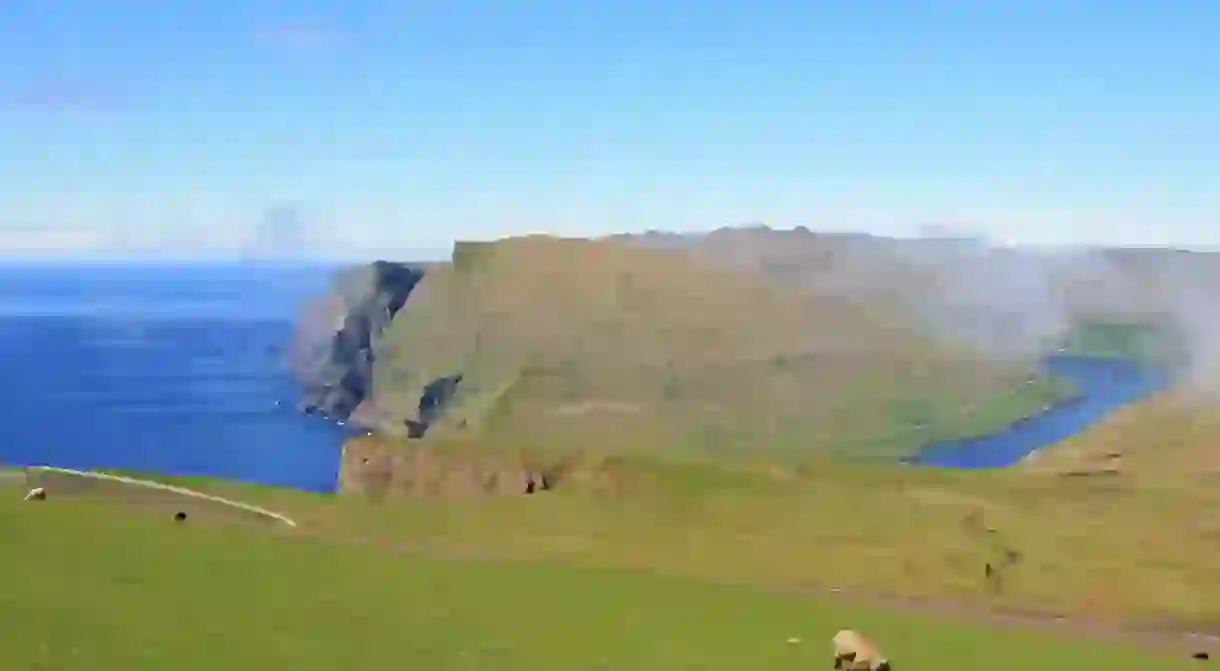Why the Faroe Islands Is a Hidden Gem Everyone Should Visit

Halfway between Iceland and Scotland, 18 small islands widely known as the Faroe Islands are scattered in the North Atlantic Ocean. Home to some of the world’s most unspoiled and wild landscapes, the Faroe Islands is a must-visit for every traveller who isn’t afraid to explore the world’s hidden corners.
Explore the Faroe Islands, one of the world’s most remote places
Steep cliffs, awe-inspiring mountains leaning above the wild ocean, long-stretching fjords and picturesque villages made of little homes with grass roofs (which are mowed by sheep) comprise the spectacular landscape of the Faroe Islands.
Tórshavn, the capital of the 18 islands, is nothing like other capitals around the world. There are no traffic-jammed streets here. In fact, only three traffic lights are needed in order to control daily traffic and they’re the only ones you’ll see in all 18 islands. Well, in a place where sheep outnumber people and inhabitants are around 50,000, even three traffic lights sound like a lot.

The Faroe Islands has been a self-governing country within the Kingdom of Denmark since 1948, but it is said that the first people to have inhabited the islands were Irish Monks and Vikings from Norway. Although the Scandinavian culture is still apparent throughout the centuries, Faroese developed their own traditions and habits. Nature has played a great role in the formation of local culture. With every place being no further than five kilometres from the ocean and the element of water being ever-present, it doesn’t come as a surprise that the Faroese are known for their exquisite fishing skills. The Faroe Islands has a strong fishing industry that produces most of the country’s income ever since the late 19th century.
Yet whaling, a Faroese tradition that has been kept alive for over a century and still takes place today, has been the source of a fair amount of controversy in numerous debates. If you want to gain deeper insight into the subject, make sure to add the captivating documentary ‘The Island and The Whales’ to your watch list.

The Faroe Islands’ breathtaking landscape
The Faroe Islands is like paradise for nature lovers. The rich flora and fauna found both on the seabed and on land will charm even the most demanding travellers. Grass hills unfurling as far as the eye can see invite hiking lovers to follow the trails and be rewarded with a spectacular view from the highest point. Mountain biking is for the bold ones but those who dare to discover the mountains on two wheels will experience an unparalleled adrenaline rush. However, you don’t have to be a thrill seeker in order to enjoy a bike ride at the Faroe. The infrastructure of each island and their interconnection with sub-sea tunnels, bridges or ferries makes biking more than a viable option. After all, the Faroe islands – though remote – are still Danish territory.

The island’s fauna is equally impressive and those who will visit the Faroe Islands will have the chance to witness some of the most extraordinary creatures in their natural habitat, both up in the sky and in the depths of the ocean. Migrating birds often fly over the North Atlantic Ocean and several islands such as Svínoy, Fugloy, Mykines, and Suðuroy make for perfect hunting grounds for ambitious birdwatchers. Around 300 different bird species have been spotted at Faroe island, 200 of which are rare migrants and new birds.
Diving at the Faroe is a must-do experience as the seabed at Faroe islands is one of the most ecologically diverse in the world. Small caves where red shrimps nestle, seaweed forests, colourful corals, and different species of starfishes (if you’re lucky enough you’ll see the purple sun star – Solaster endeca) are only some of the elements that comprise the magical seabed at Faroe.














